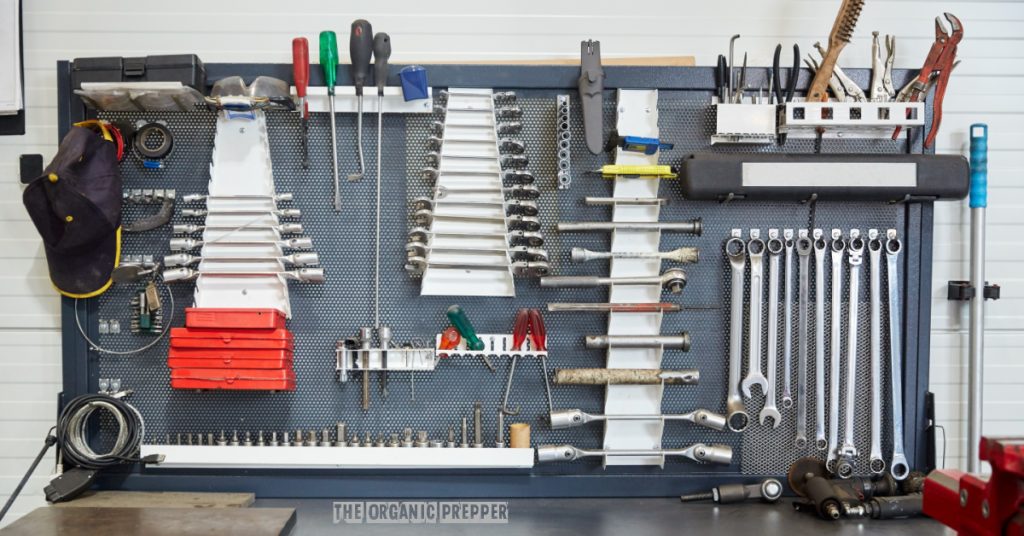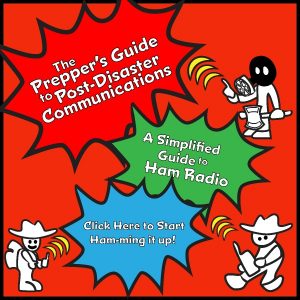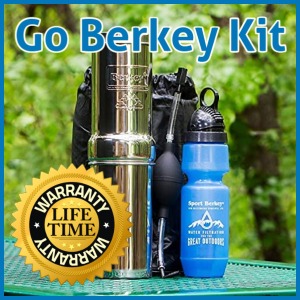If you're new here, you may want to subscribe to my RSS feed. Thanks for visiting!
One of the readers commented recently that the articles should be oriented toward the practical, pragmatic aspects of prepping in the scenario I am currently living in.
I can´t agree more.
As a result, the focus will be more strongly directed towards that purpose.
Let´s begin.
In a survival or preparedness scenario, maintaining our equipment and vehicles is crucial. On our roads, things like professional assistance or a towing truck belong to the past for most of us who are not affluent. The most we can hope for if we ever get stranded is that someone with good intentions and a strong sling or rope ties up our car, and tow us to the next town.
Under our current circumstances, a bunch of my colleagues (and myself) have been forced to do some tasks that we usually could afford some “specialist” (ahem) to do for us. That belongs to the past. Now we have to repair our stuff as much as we can.
Breakdowns can happen at the worst times, and having the right tools can make the difference between a minor setback…and a major crisis.
Here are four basic tools that every prepper should have for maintenance purposes:
1. Torque Wrench
Let´s define what torque is.
Torque: The Driving Force Behind Automotive Mechanics
Torque comes to be the rotational equivalent of “linear force”, and plays a fundamental role in mechanics. It is the measure of the force that causes an object to rotate about an axis or pivot point.
Understanding Torque
Torque is calculated by multiplying the force applied to an object by the distance from the axis of rotation to the point where the force is applied. This distance from the point of application of the force until the pivoting point is known as the “momentum arm”. That´s why by using a lever and increasing this distance, we can exert more force.
In mechanical maintenance, we use torque wrenches to provide the necessary “grip force” to the bolt or nut being tightened.
This is an important parameter as we will see in this torque wrench calibration video. The unit of measurement for torque is typically Newton-meters (Nm) or pound-feet (lb-ft). The higher the torque value, the greater the rotational force applied.
Why is this important? Because it is related to the level of grip that a bolt will have on a component. This is the most simple explanation I can find for you. Engineers and designers calculate these grip forces so the bolts and nuts get in place and don´t come loose, as well as adding some other measures like special washers of all kinds to avoid things loosening up.
It is very important to understand that, if a bolt or nut is designed to work with a washer or spacer…
We. Have. To. Use. It.
There are digital torque wrenches (my favorites) which are incredibly easy to use and you can´t go wrong with modern technology in this regard. They have a visual and auditive indicator once you reach the limit you have previously set up, which makes them super useful. In the industry we usually identify all the bolts or nuts with the same torque in a subassembly, set the wrench, and once we torque a piece, mark it with a metal marker of the favorite color. This assures you won´t miss any component!
Another good reason to use a wrench torque (for younger guys) is, with time your muscle memory will be able to remember the torque and associate it with the reading, giving you an extra level of accuracy for when you don´t have the torque wrench nearby and need to tighten something to a specific torque.
As a good practice, we should have a printed scheme if we are going to work with assembly/ disassembly, where the torques and parts configuration are depicted.
Use a printed copy of the scheme. You don´t want to bang your phone or tablet, nor risk getting it dirty with oil, grime, and grease.
Summary
- What torque (related to wrenching and bolts) gauge is: A specialized wrench that allows you to apply a specific amount of torque to a nut or bolt.
- Why it’s important: Overtightening can strip threads or even break bolts, while under-tightening can lead to crucial parts or components coming loose. A torque wrench ensures we are going to tighten all the bolts and nuts to the manufacturer’s specifications, preventing damage and ensuring things stay put. Otherwise, failing to do so can make the part come loose. No bueno.
- How to use it: Consult your equipment’s manual (workshop manual) for the correct torque specifications. Set the torque wrench to the desired setting, then tighten the fastener until the wrench clicks or indicates that the specified torque has been reached.
Your mechanics should already know (and use!) these tools. Of course, there are incredibly experienced guys who don´t use it (I don´t accept this, but they exist everywhere) except for specific parts when rebuilding an engine or some other similar surgery-like work; but after learning about critical components of the steering and front suspension going loose and failing because of the maintenance guy not using a torque wrench, I won´t risk myself again. There are many good videos on the streaming platforms to learn how to do a lot of stuff, and right now, I have done some interesting tasks on my own that are leading me to become more and more self-reliant maintaining my old pieces of junk. Including scanning my car computers, installing and removing alternators, starters (my father rebuilds those), gas pumps, polishing the headlights, vapor-cleaning the engine bay, installing heat/noise insulation carpet, and some other basic stuff. I hope to buy (someday) an ultrasonic cleaner tub because it works very well to clean at a level hard to find with any other kind of cleaning, even chemical cleaning. It works for many applications (and for my homemade copper-aluminum battery), especially for fuel system components where varnishes and fouling become an issue because of the small orifices and tight gaps where the fuel should flow without restrictions.
Mind you, modern vehicles are more and more delicate every year. They don´t have the same overdesign exhibited by the vehicles most of us grew up with. This means we have to go by the book with our maintenance.
2. Fiber Optic Viewer Probe
- What it is: A flexible probe with a magnifying lens and a light source, used to inspect hard-to-reach areas.
- Why it’s important: You may need to diagnose problems with limited visibility. Or perhaps a small piece fall down in a place where you can´t reach it easily. A fiber optics endoscope can help you see inside engines, machinery, or other tight spaces without the need to disassemble everything. You only need a port to insert the probe and will be able to have an incredible view of components that otherwise would need disassembly. Then you can see if there is wear, grime, or whatever you may be looking for in the insides. There are probes that have even a little claw to retrieve small pieces that are in places where they shouldn´t.
This probe is interesting because it has even tactical applications, but I will leave that to the Special Forces crowd out there.
3. Air Pump + Tire Gauge
- What they are: An air pump for inflating tires and a gauge for measuring tire pressure. If your car has an air suspension, you definitely need one pumping unit installed on board.
- Why they’re important: Proper tire pressure is essential for safe and efficient vehicle operation. An air pump allows you to inflate tires as needed, while a tire gauge ensures that you don’t overinflate or underinflate them.
A good idea is to use those valve caps with pressure sensors and forget about hand measuring. But if you are one of those who need to inspect tires and the general vehicle (which is always healthy) then go traditional and get a good hand gauge. You could detect on time a stain of some fluid or even a strange noise (I used to warm up my engine for a couple of minutes in the early morning, and meanwhile, gauge the air in the tires before a long road trip) and avoid potential problems. I have a small portable, 12v, which I use on my bike, too – I bought it years ago for less than 25$. Affordable and inexpensive to replace. I will get a sturdy, heavy-duty hand pump someday when it gives up: that will surely be passed on from hand to hand to the next generations.
4. Oil Draining Pump
- What it is: A pump designed to remove oil from engine reservoirs or other machinery. Some of them can work with diesel also.
- Why it’s important: Changing your oil is a basic maintenance task that’s essential for keeping our equipment running smoothly. An oil-draining pump makes this job easier and less messy, especially if you don’t have easy access to a drain plug. I like to spend as little time as possible below a car because it´s uncomfortable and I´m not used to it.
As odd or silly as this may sound, I don´t like getting my hands dirty, so I work as neatly as possible and use gloves as long as the task allows for it. On the other hand, keeping a good grip on a wrench is better with gloves, and if your wrench slips, this will protect us from painful scratches. So, yes, I like to use gloves. Especially, after the accident last year where I cut the tip of my finger.
This is a good way to empty your engine oil without making the usual mess. For those of us thinking seriously about going full diesel (which in a tropical country like this where our cars overheat so badly), wasted engine oil could be a great way to save money and keep our rigs running in the future after proper treatment of that homemade diesel. There are even some hand-powered pumps out there.
How to use it
Insert the pump’s tube into the oil dipstick hole or drain plug. Operate the pump to extract the old oil, and dump it in a container for later disposal. It is important to remove the drain plug to extract all the residues; however, doing this after the carter is empty is marvelous because you avoid the stream of hot oil and the splash/splat. Those who have had to fish the plug in a dirty oil pan know what I mean. Just let it drain naturally, put the plug again, then the oil filter, torque them, and refill.
Remember this, regardless of not knowing a thing about cars, engines and stuff:
Maintenance is key.
Regularly inspect and maintain all your equipment to prevent problems before they occur. A good reason to keep things as simple as we can.
Store tools properly: Keep your tools clean (my dad laughs when he sees me cleaning his tools. Boomers are built differently, indeed), organized, and in a dry place to prevent rust and damage.
I hope this article has been a good guide for some of the most useful gadgets we DIYers use.
I look forward to your comments, I´d love to see what you use regularly to maintain your vehicles and other equipment.
Thanks for your sponsoring to those who´ve kindly sent them.
It´s a huge relief of the financial stress I´m under these days.
Stay safe and keep tuned!
J.
About Jose
Jose is an upper middle class professional. He is a former worker of the oil state company with a Bachelor’s degree from one of the best national Universities. He has an old but in good shape SUV, a good 150 square meters house in a nice neighborhood, in a small but (formerly) prosperous city with two middle size malls. Jose is a prepper and shares his eyewitness accounts and survival stories from the collapse of his beloved Venezuela. Jose and his younger kid are currently back in Venezuela, after the intention of setting up a new life in another country didn’t go well. The SARSCOV2 re-shaped the labor market and South American economy so he decided to give it a try to homestead in the mountains, and make a living as best as possible. But this time in his own land, and surrounded by family, friends and acquaintances, with all the gear and equipment collected, as the initial plan was.
Follow Jose on YouTube and gain access to his exclusive content on Patreon. Donations: paypal.me/JoseM151
















10 Responses
That’s a great article. However from a more practical pov as a person who’s been fixing /building things for 40 some odd years, there’s a few items that could also be useful to the new diyer..
socket set. metric and imperial. they’re not terribly expensive, but can be used for a multitude of different repairs/projects/etc. for most people 1/4″ , 3/8″ and 1/2″ drive will suffice for 90 percent of tasks.
breaker bar. typically 1/2″ drive. should be bare minimum 16″ in length. 20″ is better. remember those wheel lug nuts torqued to 90ft lbs you need to break loose..
adjustable wrenches. 8″ and 10″ one of each, sometimes that’s all you need.
a decent screw driver set. flat blades, philips #1, #2, (cross point) are most common. roberts #1, #2 (square head) and becoming more common is the torx bits.
if you have an older vehicle, sourcing the service manual is indispensable. These illustrate and provide step by step procedures for repairing almost every component in your vehicle. But not cheap and can run over a hundred dollars for the printed version. rock auto has digital versions of most vehicles and ships world wide.
digital volt/ohm meter. not terribly expensive but can be used for a variety of different tasks. learn the basics of voltage, current, and resistance. can be useful in automotive 12/24 volt systems as well as household voltages 120/240 volts ac.
cordless drill. 3/8″ or 1/2″ chuck will suffice for 90 percent of tasks
decent drill bits. 1/16″ to 1/2″ are the most common. don’t go for the cheapies, either. should say HSS somewhere on the label..
screwdriver driver bits for your cordless drill.
as bad as it sounds, the “Idiots Guide to…..” are actually well written books, with a respectable amount of detail and warnings on various undertakings, and provide step by step instructions on everything from house renos to basic auto repair.
most of these items aren’t terribly expensive with the drill and socket sets being the most pricey items. learning diy isn’t a linear process. you will strip out screw heads, bolts, break things, etc and invent a few new colourful words to boot. making mistakes is part of the process, but learning how fix and not repeat is even more germane to the process.. hope this helps..
Dear mrk,
It´s great to see how we´re not alone. Specially in the creativeness when we mess it up. LOL.
Thanks for those wonderful messages.
My list of essential tools stretches into next month. My reasons –
Other than principal residence, a BOL also needs maintenance too. Over the years, I have acquired a number of “basic items” for both locations. Some overlap, some are specific to location. For instance, I only use my arc welder at “the farm”, lots of things are duplicated at each location. I’d be driving an 18 wheeler if I had to haul the tools from to BOL to home and back.
So, here goes:
Chainsaw with extra chains, files for sharpening, bar oil, pre-mix oil.
(One travels with back and forth to BOL.). My son needed to use his saw to cut his way out of BOL with a downed tree blocking the drive at BOL this past weekend.
Tow strap.
20+ feet of chain with at least 4,000 pounds capacity
Some ratchet straps
Some bungee cords
GI “trenching tool”.
Several sets of “Vice Grips” : small and large, needle point and regular, also a vice grip with a clamp on the body to hold stuff still when you work on it.
Cable ties (different lengths) (note that most are NOT UV resistant. The do become brittle after a year or so.
Duct (better yet, “Gorilla Tape).
Vet tape. At about $2 for 15 yards by 4″ at farm supply places as well as pet stores. (More in a bit.)
Gorilla glue
Super glue.
Heat gun (more later about why)
Hemostats, 16 ” and short ones.
Long tweezers (16′)
A socket set (metric and imperial)
Assorted screw drivers
8 pound sledge hammer
Felling and splitting wedges
Axe
Hatchet
Crow bar
A beekeeper’s “Hive tool” a mini pry bar and small nail puller. The big box hardware / lumber stores have it. Or Amazon for less than $9 up to around $20 depending on features.
Machete
Carpenters hammer (16″ handle)
Various hand saws – don’t forget hacksaw and assorted blades for wood, metal, plastics, …
A good multi tool. Leatherman, Kobalt, are the gold standard. DON’T cheap out on this one. My A Leatherman is an EDC item for me. One even “lives in” my ski parka.
Folding lock back knife
Pruning saw
Pruning snips
Sharpening stone
Several hundred feet of “550 cord” aka parachute cord.
Disposable lighters
50 plus feet of 1/2″ or larger nylon line. Add hooks at each end for 1001 things.
Ratchet puller. I’ve used one to self rescue my Jeep when it got really stuck. Saved a big towing bill.
Cordless driver/drill
Various bits, etc. for drill
An assortment of drywall screws of different lengths
I think you get my train of thought.
Marc’s ninja secret to Duct/Gorilla tape: Apply the tape to where you want it. GENTLY heat it with the heat gun.. The adhesive melts and then cools to make a really strong bond. A fast way to repair fabrics.
Vet tape is really a great thing to have around everywhere. It stretches and is self adhesive. Works when wet. Leaves NO residue and doesn’t stick to skin and fur. I’ve used it for making a splint (just add some cardboard and vet tape it in place). A sling. Hold a compression bandage in place. Instead of an Ace bandage. It is much thinner than as ACE so you can wrap a twisted ankle and put your shoe/boot. back on. Most of the ski patrollers I know carry some in their emergency packs. I know it works at almost 13,000 feet in Colorado and subfreezing temperatures. It works at sea level and typical summer temperatures (90+ F) in mid-Maryland. For my outdoorsy brothers and sisters, stuff a roll into your day bag. The weight is next to nothing and doesn’t need a lot of space. As an avid deer hunter, I have a roll in my butt pack.
Stay safe out there !
Dear Marc M,
Matter of fact, I like to use a small heat gun to finish my electrical connections with a nice shrinking sleeve in my vehicles, no matter if it is in a car or my motorcycle, or my home. It´s a good practice that I seem to have absorbed somewhere.
I see why you include a heat gun here (I have two! a large one, electric, and a smaller one with butane)
Sorry the way my posting got smished into a big long paragraph ! Hope you can read it.
I would recommend against “cordless” tools. Unless they are regularly used, their batteries die. I inherited a few, none of which work because the batteries are dead, and were dead when I got them. I bought a few corded tools to replace those cordless tools which work reliably (as long as there is electricity). I also bought some hand tools—while not as easy to use as power tools, they work.
You’re absolutely correct about hand tools in a shtf situation. Our son has a lot of cordless tools and they’re handy for the back pasture or even in the front. But if there’s no power – and might not be any for awhile, or if it’s sporadic – hand tools are priceless. The bushcraft guys on youtube can build a brick house with nothing, but most of us don’t have those skills.
Dear R.O,
perhaps you could find some adapter to convert them to corded? Speculation on my side, but there is a bunch of products out there and I wouldn´t be surprised.
In addition to what was mentioned by the others…..
Add a small solar setup 600W with an inverter if you want to recharge any batteries
– Ryobi has “good” (not great) grade tools and always has sales on Lithium batteries. These batteries last for years.
– buy the “Brushless” ones in key areas like drills, Sawzall, and circular saw (buy a corded circular saw too)
– Good sets of adjustable pliers
– Lots of clamps
– Lots of screws general purpose construction Torx 1″ to 3 ” w/extra bits
– Elmer’s Glue (wood projects)
– 2 part epoxy
– Gel crazy glue (any brand)
– Bastard File and other large and small files
– Small grinder with extra cutoff and flapper wheels (cordless and corded)
– Razor knifes with lots of spare blades
– Vulkam (seals anything)
– Flashlights (Ryobi makes small ones – Lithium)
– Tape measures
– Good quality Butane mini torch (spare butane)
– Marine grade heat shrink (various sizes)
– Metal duct strapping (in a roll galvanized)
– PVC Glue/Primer
– PVC Cutter
Since I live in the middle of no where I have assembled all of the essentials and then some. My rule is I have to use it at least once or I get rid of it. Since we literally built everything here it has been a good rule.
Dear IntheBooniesTX,
Impressive list!
You must have a lot of fun building everything, and gathering skills.
Loved the comment on the brushless electric motors, indeed. My dad has rebuilt the brushed ones by decades.
Thanks for sharing your knowledge!